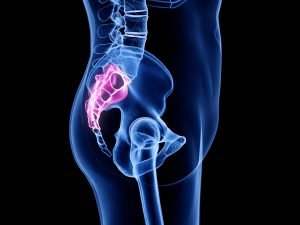Superior Hypogastric Plexus Blocks
A hypogastric plexus block is an injection of local anesthetic medication that blocks a group of nerves that rest in front of the L5-S1 lumbar disc from sending pain signals to the brain, which results in relief from pelvic pain. The superior hypogastric plexus contains nerve fibers that carry stimuli to and from the bladder, urethra, uterus, vagina, vulva, perineum, prostate, penis, testes, rectum, and descending colon. This block can potentially alleviate pain originating from these regions. It can also be used as a diagnostic tool in determining the source of your pain.
Download our printable information sheet.
Frequently Asked Questions
Upon arrival, you will meet with one of healthcare professionals to discuss your medical history and to ask any questions you may have about the procedure.
You may receive an IV sedation to help relax you. During the procedure, you will lie on your stomach. A local anesthetic is applied to the skin. Most patients tolerate the injection very well. Numbing medicine is placed under the skin that feels like a poke and a burn. After that, you most likely will only feel pressure. Your doctor then uses an X-ray to guide the placement of a very thin needle to the proper position. Once in place, a test dose of dye is used to confirm the injected medication will reach the intended area, and not in a blood vessel. The doctor then gradually injects the local anesthetic (numbing) medication.
You may start feeling relief within 24 hours, though it may take a few days to feel the full effects of the procedure. The lasting effects of the treatment differs with everyone, ranging from weeks to years. Your doctor may recommend subsequent injections to continue the pain relief or that can be used to manage your pain long term for recurrent pain.
Following the procedure, you will rest in the recovery area. If sedated, you will need a responsible adult to accompany you home. After the injection, you may notice that your pain has lessened. Often patients will feel soreness in the back at the injection site. You will perform activity as tolerated. You should be able to return to work the next day unless otherwise directed by your doctor.
Overall, the procedure is very safe, but there is always risk with any penetration of skin and soft tissue. Risks include infection, bleeding, bladder problems, nerve injury and/or paralysis, puncture of surrounding organs, puncture of adjacent vessels, drug allergy, seizure, and leg ischemia. Secondary risks include drug allergy, seizure and infection.
Notify your doctor if you are allergic to specific local anesthetics or ionic contrast. Also, if you take any blood thinners (Coumadin, Plavix, Warfarin, Lovenox, Pradaxa, Eliquis) notify your doctor ahead of time to help devise a safe plan for the injection.



